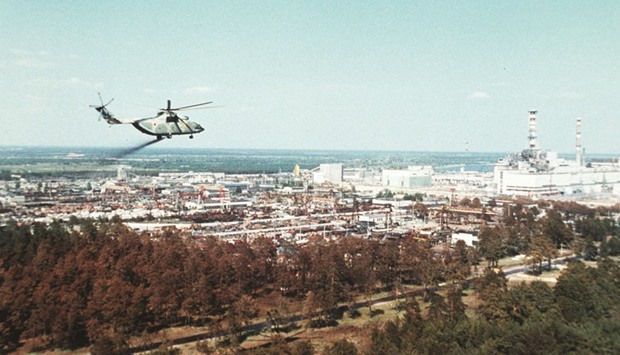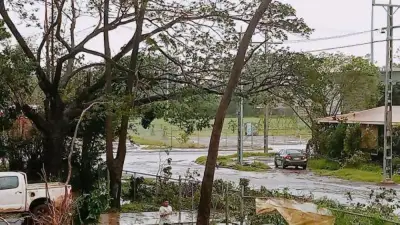The world’s largest metal moveable structure will be unveiled tomorrow over the Chernobyl nuclear power plant’s doomed fourth reactor in Ukraine to ensure the safety of future generations across Europe.
The giant arch – nearly as long as two football pitches and taller than New York’s Statue of Liberty – will edge into place over an existing crumbling dome that the Soviets constructed in haste when disaster struck three decades ago on April 26.
Radioactive fallout from the site of the world’s worst civil nuclear accident contaminated Ukraine and spread across three-quarters of Europe.
Work on the previous safety dome began after a 10-day fire caused by the explosion was contained but as radiation still spewed.
“It was done through the super-human efforts of thousands of ordinary people,” the Chernobyl museum’s deputy chief Anna Korolevska told AFP. “What kind of protective gear could they have possibly had? They worked in regular construction clothes.”
About 30 of the clean-up workers known as liquidators were killed on site or died from overwhelming radiation poisoning in the following weeks.
The toll from the accident caused by errors during an experimental safety check remains under dispute because the Soviet authorities did their best to cover up the tragedy.
Kiev held a May Day parade as invisible contamination spread over the city while then-Soviet leader Mikhail Gorbachev only admitted on May 14 that something had gone terribly wrong.
A United Nations estimate in 2005 said around 4,000 people had either been killed or were left dying from cancer and other related disease.
But the Greenpeace environmental protection group believes the figure may be closer to 100,000.
The authorities maintain a 30km (19-mile-wide) exclusion zone around the plant in which only a few dozen elderly people live.
Concerns over the safety of the disintegrating concrete shelter – built by 90,000 people in just 206 days – prompted the European Bank for Reconstruction and Development (EBRD) to spearhead a €2.1bn ($2.2bn) project to install a new safety dome.
The numerous problems with the Soviet-era solution included the fact that the protective structure only had a 30-year lifespan.
Yet its deterioration began much sooner than that.
“Radioactive dust inside the structure is being blown out through the cracks,” Sergiy Paskevych of Ukraine’s Institute of Nuclear Power Plant Safety Problems told AFP.
He added that the existing structure could crumble under extreme weather.
“This would especially be a potential problem if there was a tornado or an earthquake,” Paskevych said.
The new arch should be able to withstand tremors of 6.0 magnitude – a strength rarely seen in eastern Europe – and tornados the likes of which strike the region once every million years.
Chernobyl’s dangers are real but Kiev complains that Europe’s help took a long time coming.
The EBRD found 40 state sponsors to fund a competition in 2007 to choose who should build a moveable dome the likes of which the world had never seen.
A French consortium of two companies known as Novarka finished the designs in 2010 and began construction two years later.
The shelter was edged toward the fourth reactor in just under three weeks of delicate work this month that was interrupted by inclement weather and other potential dangers.
It will later be fitted with radiation control equipment as well as air vents and fire protective measures.
That equipment inside the arch is due to start working by the end of 2017.
“And only then will we begin to disassemble the old, unstable structure,” the head of Ukraine’s State Nuclear Regulation Inspections agency Sergiy Bozhko told AFP.
But he said no timeframe had yet been set for the truly hazardous work of removing all the remaining nuclear fuel from inside the plant or taking apart the old dome.
“Those decisions will be made based on future studies,” Bozhko said.
Novarka believes that its arch will keep the continent safe from nuclear fallout for the next 100 years.

This undated handout picture from Russian news agency Tass shows a military helicopter spreading stuff supposed to reduce the contamination of the air full of radioactive elements above the Chernobyl nuclear plant, days after its No. 4 reactor’s blast, the world’s worst nuclear accident of the 20th century.


